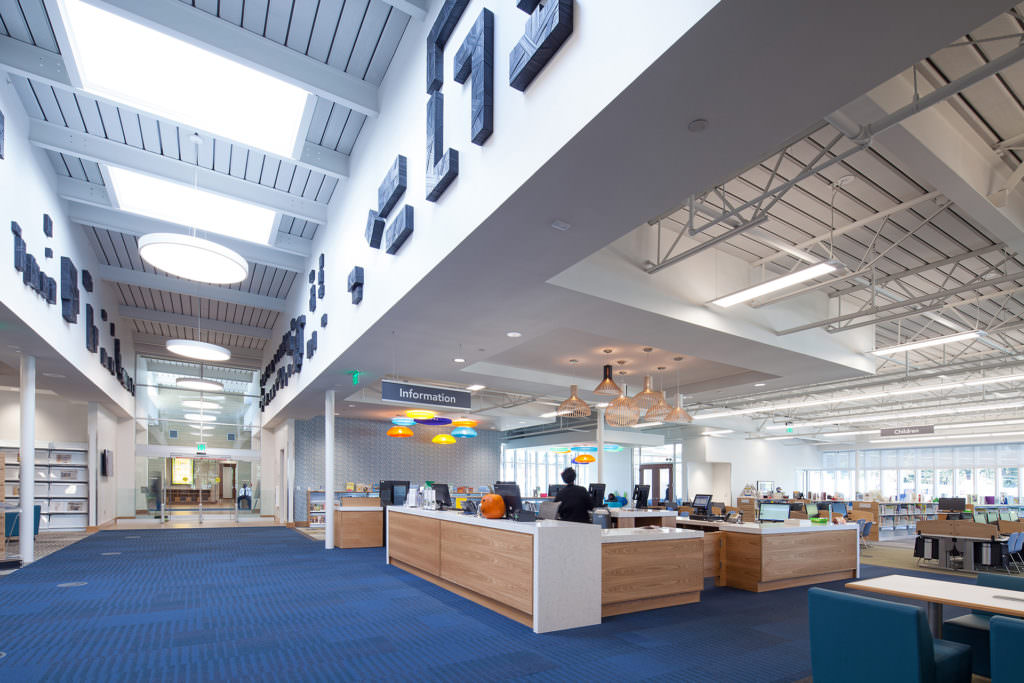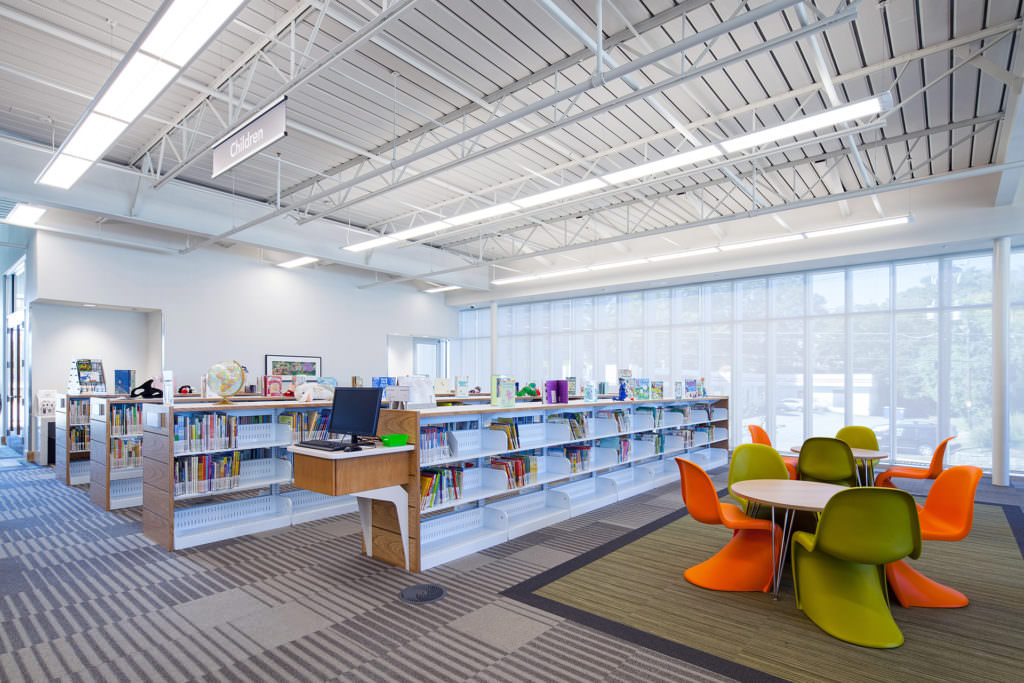the FUTURE of the Library
The future constantly presents human civilization with visible opportunities and subtle threats.
As libraries yield their storied history to the technological advancements of contemporary life, public libraries continue to lead cultural transformation, even as their image as repositories of the printed word faces the whisperings of obsolescence. As repositories of words, pictures, and ideas, the modern library is immersed with cutting edge technology and instantaneous access. They remain places of great mystery and discovery, welcoming people of all ages to explore ideas and improve their lives. With the advances of social media, the concept of access has changed dramatically, as has the awareness that recorded information contains fact and opinion and must be carefully discerned.
Three ideas consistently frame the design of 21st century library buildings.

The library is a high-tech community center.
The professional staff managing these institutions is well-trained in how to access information through the library’s vast resources and how to make it useful and effective to the public. The design of these facilities conveys its technological underpinnings through the display of state-of-the-art technology, but also through sleek lighting, intriguing color schemes, well-organized interiors, and graphic design. The public library hosts an array of programs that transform peoples’ lives through skills training, historical and political awareness, and community service. Well-equipped “maker spaces” provide access to technology that encourages innovation and creativity. In the virtual world of 2023, the technology in public libraries offers facilities for community groups to connect remotely.

The library is a social place.
Gone are the days when libraries were defined by hushed silence and individual study. Contemporary libraries encourage social gatherings of small and large groups. The emphasis on group learning in the educational community is reinforced through organized and focused activities for children, teens, and adults. Group study rooms provide space for students to work together with close access to the advanced information contained in the library. As popular “third spaces,” public libraries, often serving coffee and snacks, have become an integral part of the lives of people of all ages.

The library is a flexible, changeable, and adaptable place.
As libraries through the ages were zoned and organized by age and the need for acoustical privacy and material security, today’s libraries are designed to provide flexibility and adaptability. This includes the location of materials and equipment, the use of advanced wireless technologies, and adaptable flooring and furniture to allow reconfiguration. As acoustics have become less important, large open spaces that can be zoned by moveable furniture systems have become the norm. Centrally located service desks, no longer tethered to large and expansive staff workrooms, offer excellent visual control and easy access to staff for assistance.


